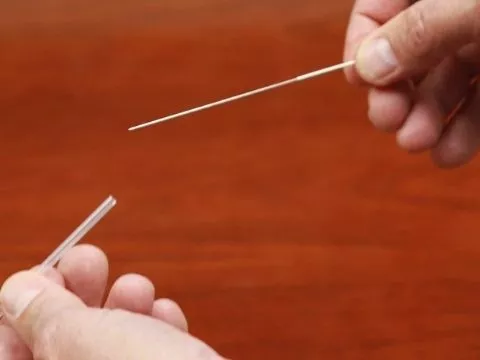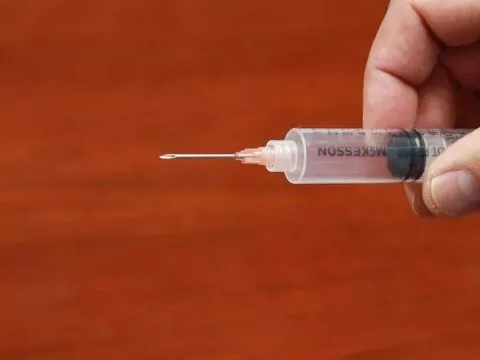One of the more impactful tools we use as physical therapists is dry needling. However, there seems to be some confusion on the topic. You may have heard of this useful modality in the past, or you may have heard a friend recommend it.
I am often asked the question, what is dry needling? I hope this article helps shed some light on the topic and helps answer some of your questions.
Dry needling is a treatment technique practiced by a physical therapist. It is a treatment that uses thin needles (known as monofilament needles) to relieve muscular pain and improve movement. It is sometimes referred to as “intramuscular stimulation” or “intramuscular manual therapy.”
How dry needling works to relieve pain
There are several physiological mechanisms that dry needling influences to reduce inflammation and inhibit pain. The nerves that contribute to the sensation of pain are called nociceptive mechanoreceptors. The mechanisms that dry needling impacts include biochemical, biomechanical, endocrinological and neurovascular mechanisms.
The introduction of a needle into specific musculoskeletal tissue starts to influence the body by the mechanical deformation of the tissue resulting in a release of chemicals that respond to the micro trauma. This leads to a series of endogenous (produced within the body) pain inhibitory chemicals. These internal opioid-based pain chemicals have powerful effects.
There is also a slower hormonal response. Other natural (endogenous) chemicals include cannabinoids. The neurological response is centered in the sympathetic nervous system. This provides non-opioid pain relief via serotonin and norepinephrine from the brain stem.
Dry Needling also triggers the central nervous system and the corticotropin releasing hormone, which affects our response to stress.
Myofascial trigger points, sensitive and tender points located in a muscle also play a role in pain. And dry needling can inhibit their contribution to pain.
Therefore, the mechanism responsible for DN-mediated pain relief (analgesia) is more complicated than we fully understand today but we know it works well.
What is the difference between dry needling and acupuncture?
Dry needling is NOT the same thing as acupuncture. Acupuncture is performed by a trained acupuncturist, and is used to treat many ailments other than pain. Acupuncture involves the insertion of the same mono filament needles through your skin at strategic points on your body.
The specific points chosen by an acupuncturist are based upon the philosophy of Chinese medicine and lie on meridians that have been long established. These points are called A-Shi. A physical therapist’s placement of the needles has more to do with their knowledge and training in anatomy and physiology. It is generally used to treat various forms of chronic pain.
Why is it called “dry” needling?
Dry needling got its name, in part, to differentiate it from acupuncture. The primary reason, however, is to distinguish it from the process of using needles to inject medicine or “wet needles”.
When you receive an injection by a physician, dentist, nurse or physician’s assistant, they will use a hypodermic needle which contains some medication (often lidocaine, cortisone, or some other medicine). The needles used are hollow to allow the medicine to pass through the needle into the body. You can see the difference below:


Examine the illustration above. They show the relative proportions one compared to the other. You can imagine that a hollow point needle would be more painful due to the surface area of the needle that will contact and push through the tissue when inserted.
Dry needling is part of a larger treatment plan
Dry needling is not actually an alternative treatment. It is accepted as part of modern medicine following western medicine principles. One of the ways dry needling became commonly accepted as a western medical technique was quite accidental.
When physicians were researching the impact of various medicines on muscle pain and trigger points, researchers would use a dry hypodermic needle as a control or placebo. What was discovered was that individuals benefited simply from having a needle inserted into specific sites of dysfunction and trigger points.
With trigger point dry needling, a physical therapist treats dysfunctions in skeletal muscle, fascia and connective tissues. Needles are often placed into myofascial trigger points, which are taut bands of skeletal muscle located within a larger muscle group (American Physical Therapy Association).
Physical Therapists that use dry needling as part of patient treatment plans have had extensive training in Anatomy, Physiology, Pathophysiology, Biomechanics, and safe Dry Needling techniques. Therapists typically use Dry Needling as part of a comprehensive plan that includes other manual therapies, therapeutic exercises, and patient education. We often add electrical stimulation to the Dry Needling treatment to increase the impact of the process.
What conditions are treated by dry needling?
Dry needling is a safe and effective way to treat many chronic and acute conditions. These include but are not limited to:
- Temporomandibular pain/dysfunction
- Headaches or migraine headaches
- Neck pain
- Back pain
- Radiculopathy
- Sacroiliac joint pain/dysfunction
- Tendinitis
- Tennis elbow
- Shoulder pain/Rotator cuff dysfunction
- Adhesive capsulitis
- Hip pain/Piriformis Syndrome
- Tarsal Tunnel Syndrome
- Plantar Fasciitis
- Ehler’s Danlos syndrome
- Hypermobility
- Overuse injuries
- Fibromyalgia
- Knee pain
- Carpal Tunnel Syndrome
- Osteoarthritis
Dry Needling Risks and Side Effects
Mild side effects are very common with dry needling, but serious side effects are rare. The most common side effects around the injection site include:
- Bruising
- Temporary bleeding at site of needle insertion
- Temporary soreness
Does dry needling hurt?
We are often asked what dry needling feels like, and whether or not it hurts. Having a thin monofilament or filiform needle inserted through your skin and into a muscle is relatively painless. You might feel the initial prick but not much else. As the needle moves into the muscle, patients may often feel the muscle twitch, a sense of warmth, or a mild deep ache.
With the application of electrical stimulation patients report feeling some tingling ad or a rhythmic muscle contraction, not unlike use of a TENS unit but deeper. Once needles are removed there may be a small amount of bleeding, but not very much.
Additional responses to dry needling may include a sense of relaxation or fatigue as the body reacts to the central nervous system and biochemical impact of the needles. Sometimes, there may be some achiness in the muscle and on occasion a small bruise. If dry needling is going to be helpful, you will know within a few sessions.
Overall, dry needling has proved to be an effective strategy for managing chronic pain and musculoskeletal dysfunction. It is also a useful technique in healing more quickly from acute injuries. It is always important to have a thorough examination of your condition by a qualified clinician before embarking on any treatment plan.
If you’ve been considering dry needling in response to your pain, please reach out to us. We would be happy to answer any questions you have and provide a free consultation if you would like.

















